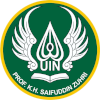Prediction of Customer Switching Using Support Vector Machine Method
DOI:
https://doi.org/10.24090/tids.v1i2.12277Keywords:
Customer satisfaction, Support Vector Machine, exploratoty data analysis, online storeAbstract
Several studies on predicting customer switching focus on the telecommunications industry and online stores. This research aims to predict customer switching to get the best results; customers are the most critical mass; some companies must provide satisfying services so customer flow decreases. The support vector machine (SVM) method uses machine learning to find a hyperplane based on the SRM principle. A hyperplane is a decision boundary that helps classify data points. SVM stands out for its ability to take input data and make predictions based on its characteristics. This study uses data from Kaggle, structured it, cleaned it, identified patterns and inconsistencies (such as skewness, outliers, and missing values), and built and validated hypotheses. From the data processing, the plot shows the imbalance of data classes between churners and non-churners. This research applies several models where the most significant or best performance value is in the SVM model of 0.7996. The Neural Network model can be trained with better patterns to detect data and achieve high accuracy.References
V. R. R. Raj and R. A. Azad . V, “Customer Churn Prediction in Telecommunication Industry Having Data Certainty,” Int. J. Sci. Res. Sci. Eng. Technol., pp. 113–122, Jul. 2020, doi: 10.32628/IJSRSET207427.
M. Zhao, Q. Zeng, M. Chang, Q. Tong, and J. Su, “A Prediction Model of Customer Churn Considering Customer Value: An Empirical Research of Telecom Industry in China,” Discrete. Dyn. Nat. Soc., vol. 2021, pp. 1–12, Aug. 2021, doi: 10.1155/2021/7160527.
I. M. M. Mitkees, S. M. Badr, and A. I. B. ElSeddawy, “Customer Churn Prediction Model Using Data Mining Techniques,” in 2017 13th International Computer Engineering Conference (ICENCO), Cairo: IEEE, Dec. 2017, pp. 262–268. doi: 10.1109/ICENCO.2017.8289798.
X. Xiahou and Y. Harada, “B2C E-Commerce Customer Churn Prediction Based on K-Means and SVM,” J. Theor. Appl. Electron. Commer. Res., vol. 17, no. 2, pp. 458–475, Apr. 2022, doi: 10.3390/jtaer17020024.
I. Ernawati, “Data Mining Sebagai Salah Satu Solusi Strategi Bisnis,” Inform. J. Ilmu Komput., vol. 14, no. 1, p. 9, Apr. 2018, doi: 10.52958/iftk.v14i1.367.
Y. Sun and X. Tan, “Customer Relationship Management Based on SPRINT Classification Algorithm under Data Mining Technology,” Comput. Intell. Neurosci., vol. 2022, pp. 1–11, Apr. 2022, doi: 10.1155/2022/6170335.
B. A. Nugroho, A. K. A. Pradana, E. Nurfarida, and and, “Prediksi Waktu Kedatangan Pelanggan Servis Kendaraan Bermotor Berdasarkan Data Historis menggunakan Support Vector Machine,” JEPIN (Jurnal Edukasi dan Penelit. Inf., vol. 7, no. 1,p, p. 25, 2021.
F. Handayani, “Komparasi Support Vector Machine, Logistic Regression dan Artificial Neural Network dalam Prediksi Penyakit Jantung,” J. Edukasi dan Penelit. Inform., vol. 7, no. 3, p. 329, Dec. 2021, doi: 10.26418/jp.v7i3.48053.
S. B, S. M, and N. D, “Customer Churn Prediction,” IARJSET, vol. 8, no. 6, pp. 527–531, Jun. 2021, doi: 10.17148/IARJSET.2021.8692.
K. Sahoo*, A. K. Samal, J. Pramanik, and S. K. Pani, “Exploratory Data Analysis using Python,” Int. J. Innov. Technol. Explor. Eng., vol. 8, no. 12, pp. 4727–4735, Oct. 2019, doi: 10.35940/ijitee.L3591.1081219.
T. Verdonck, B. Baesens, M. Óskarsdóttir, and S. Vanden Broucke, “Special issue on feature engineering editorial,” Mach. Learn., vol. 113, no. 7, pp. 3917–3928, Jul. 2024, doi: 10.1007/s10994-021-06042-2.
Downloads
Published
How to Cite
License
Copyright (c) 2024 Abu Tholib, Selfia Hafidatus Sholeha, Qurrotu Aini

This work is licensed under a Creative Commons Attribution 4.0 International License.







